How Much to Replace a Heating and Air Conditioning System
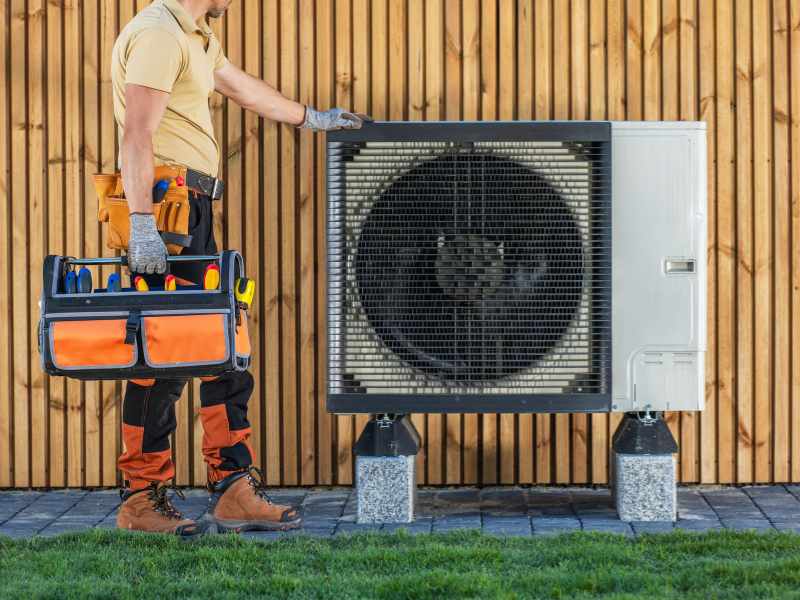
Thinking about replacing your heating and air conditioning system but not sure where to start or how much it’s going to set you back? You’re not alone. Getting your head around HVAC (Heating, Ventilation, and Air Conditioning) can feel like decoding a complex puzzle, especially when it comes to understanding what kind of system you need, the size that’s right for your space, and, of course, how much it’s all going to cost.
Whether it’s the dead of winter or the peak of summer, ensuring your living or workspace is comfortable is crucial. From exploring the types of HVAC systems available to breaking down the average costs, we’re here to guide you through everything you need to know about replacing your heating and air conditioning system. Plus, we’ll share some handy tips on how you can save on these costs and make the most of your investment.
What is a Heating and Air Conditioning System
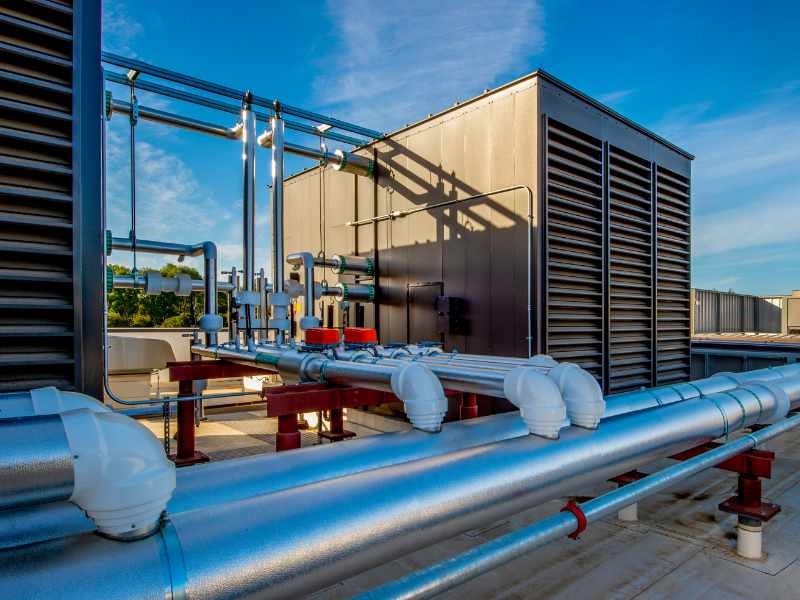
A heating and air conditioning system, commonly referred to as HVAC (Heating, Ventilation, and Air Conditioning), is an integral component of residential, commercial, and industrial buildings. Its primary goal is to provide thermal comfort and acceptable indoor air quality. HVAC systems control the environmental conditions within a space, including temperature, humidity, and air purity, to ensure the well-being and comfort of occupants.
At its core, the HVAC system operates through a network of principles that involve the transfer, exchange, and regulation of heat and cooling. During colder months, the system heats the indoor air, while in warmer seasons, it removes excess heat to cool the interiors. This is achieved through a complex arrangement of components such as furnaces, air conditioners, ductwork, thermostats, and ventilation outlets, which work together to circulate and treat air.
The design and operation of HVAC systems are guided by the principles of thermodynamics, fluid mechanics, and heat transfer. Modern systems are increasingly focusing on energy efficiency and the reduction of environmental impact, incorporating technologies such as programmable thermostats, energy-saving modes, and the use of eco-friendly refrigerants. Understanding the importance of HVAC systems goes beyond comfort, touching on health aspects by filtering out pollutants and maintaining optimal humidity levels, thus preventing the growth of mold and mildew.
With advancements in technology, HVAC systems are becoming smarter, more efficient, and more integrated into the fabric of smart home and building management systems, offering users unprecedented control over their environments. The evolution of HVAC systems reflects a growing emphasis on sustainability, user-friendliness, and adaptability to diverse environments, making it a field of constant innovation and an essential aspect of modern living and workspace design.
Factors Affecting Replacement Cost
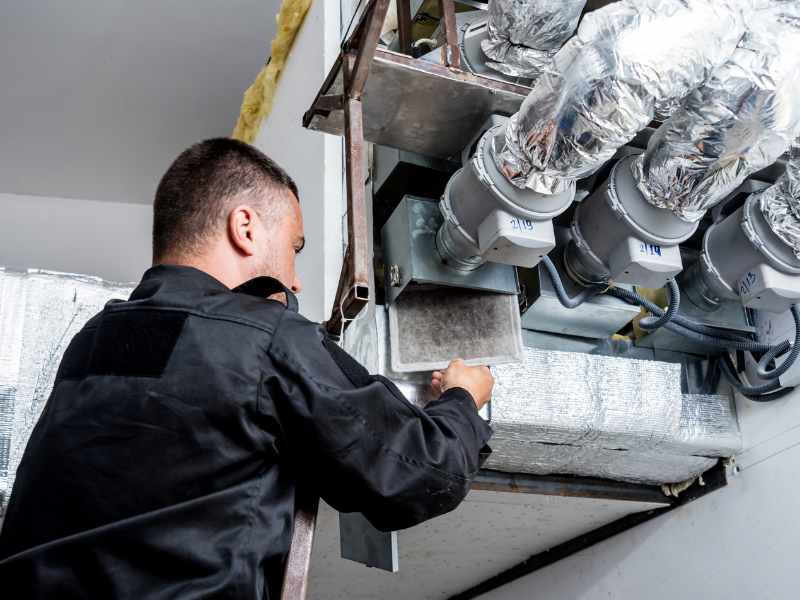
Several factors influence the cost of replacing a heating and air conditioning system. These include the type of system, such as central air systems, ductless mini-split systems, and heat pumps. The size of the system is crucial, determined by the square footage coverage and BTU requirements.
Efficiency ratings, including SEER for cooling and HSPF for heating, play a significant role in determining cost. Additionally, the brand of the equipment can affect the price, with options ranging from premium brands to more budget-friendly brands. Understanding these factors is essential for homeowners and business owners looking to replace their HVAC systems.
It helps in making informed decisions that balance cost with comfort, efficiency, and long-term savings.
Type of System
The type of HVAC system selected significantly impacts the overall replacement cost. Options include:
- Central Air Systems: Common in many homes and businesses, providing a comprehensive solution for heating, cooling, and ventilating through ducts.
- Ductless Mini-Split Systems: Ideal for spaces without ductwork, offering efficient and quieter operation with zoned temperature control.
- Heat Pumps: Versatile units that provide both heating and cooling efficiently, making them a popular choice.
Size of the HVAC System
Determining the right HVAC system size involves:
- Square Footage Coverage: The area a system can efficiently heat or cool is crucial, with larger spaces requiring higher capacity systems.
- BTU Requirements: Measured in BTUs, this determines the heat required to raise the temperature of one pound of water by one degree Fahrenheit. Higher BTU ratings cater to larger spaces but increase the cost.
Efficiency Rating
Efficiency ratings are key to long-term savings and environmental impact, including:
- SEER for Cooling: A higher SEER rating indicates better cooling efficiency, offering savings on energy bills despite a higher initial cost.
- HSPF for Heating: A higher HSPF rating means more efficient heating, leading to lower energy costs during colder months.
Brand
The brand of the HVAC system plays a role in cost, with options ranging from premium to budget-friendly:
- Premium Brands: Known for durability, advanced technology, and higher efficiency, these brands offer long-term savings despite a higher upfront cost.
- Budget-friendly Brands: These brands provide basic functionality at a lower price point, suitable for those on a tight budget.
Average Cost Range for Replacement
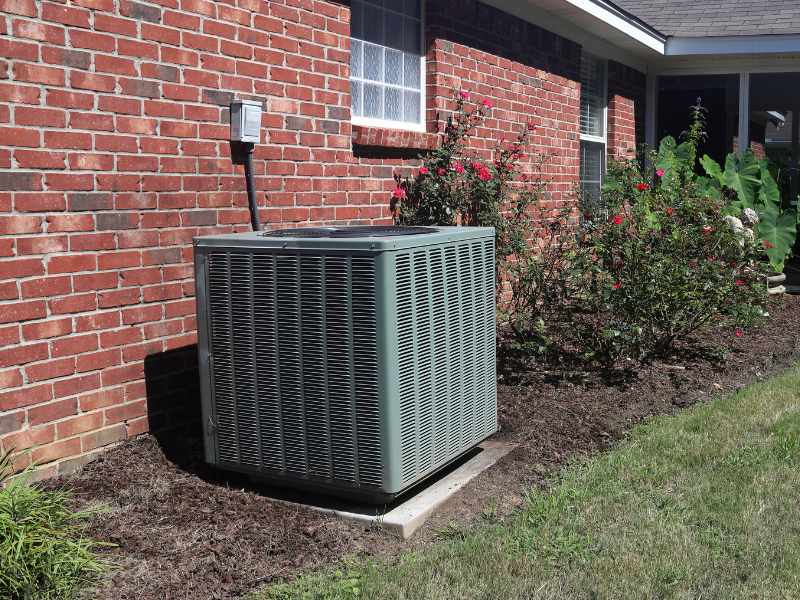
The average cost to replace a heating and air conditioning system varies widely, influenced by factors like the type of system, size, efficiency rating, and brand. For central air systems, homeowners might anticipate spending between $3,000 and $7,000. In contrast, ductless mini-split systems can range from $2,000 to $14,500, depending on the number of indoor units required.
Heat pumps, known for their cost-effectiveness and energy efficiency, typically range from $4,000 to $8,000. These figures are broad estimates, and actual costs can diverge based on specific project needs, local labor rates, and any additional modifications necessary during the installation process.
Central Air Systems
Central air systems offer a full solution for heating, cooling, and ventilating an entire building through a duct network. The replacement cost typically falls between $3,000 and $7,000. This range depends on factors such as the system’s capacity, efficiency, and the complexity of the installation process.
Ductless Mini-Split Systems
Ductless mini-split systems provide targeted heating and cooling without extensive ductwork, perfect for retrofitting or adding to specific areas. Costs for replacing ductless mini-split systems can range widely, from $2,000 to $14,500, influenced by the number of indoor units required and the system’s overall capacity.
Heat Pumps
Heat pumps stand out for their energy efficiency, working by transferring heat rather than generating it. The average cost for replacing heat pumps is between $4,000 and $8,000. The price is affected by the type of heat pump (air-source or geothermal), its efficiency ratings, and the installation’s complexity.
ALSO READ: How Much is a New HVAC System?
Additional Costs to Consider

When planning for the replacement of a heating and air conditioning system, it’s crucial to account for additional costs beyond the basic purchase and installation. These include:
- Installation Labor: Costs can vary greatly depending on the complexity of the installation and the experience of the installer.
- Ductwork Modifications: Whether you’re repairing existing ductwork or installing new ductwork, these modifications can significantly affect the overall cost.
- Permits and Inspections: Often required for HVAC installations, the fees for permits and inspections depend on local building codes and the specific requirements of the project.
Considering these factors early in the planning process can help ensure a more accurate budget and avoid unexpected expenses.
Installation Labor
The cost of installation labor is influenced by the project’s complexity and the installer’s experience. Higher skill levels and experience may lead to increased rates but can ensure a more efficient and quality installation.
Complexity of HVAC Installation
The complexity of the installation directly impacts labor costs. More complex projects that require custom solutions or extensive modifications will generally be more expensive.
Experience of HVAC Installer
The experience of the HVAC installer is crucial, as more experienced professionals often charge more but also bring a higher level of expertise, potentially reducing future complications and ensuring the longevity of the system.
Ductwork Modifications
Ductwork modifications can significantly add to the project cost, encompassing both repairing existing ductwork and installing new ductwork based on the system’s requirements and existing infrastructure.
Repairing Existing Ductwork
Repairing existing ductwork involves addressing leaks, sealing, and insulation to enhance the new HVAC system’s efficiency. This step is vital for maintaining optimal performance.
Installing New Ductwork
Installing new ductwork may be required if the current system is incompatible with the new HVAC setup or if it is significantly deteriorated, representing a considerable portion of the additional cost.
Permits and Inspections
Permits and inspections ensure the installation adheres to local building codes, a critical aspect for safety and compliance. These requirements can influence the project’s timeline and overall expense.
Local Building Codes
Adherence to local building codes is mandatory and varies by location, affecting everything from the installation process to the types of equipment used, thereby impacting the cost.
Inspection Fees
Inspection fees are associated with the permitting process, validating that the installation meets all local standards and regulations. These fees vary based on the project’s scale and the specific regulations in place.
Ways to Save on Replacement Costs
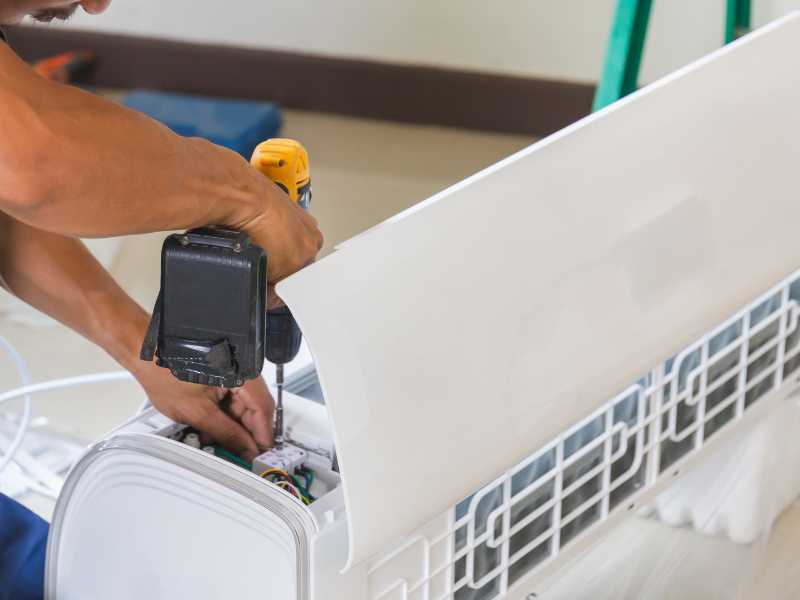
To mitigate the financial impact of replacing a heating and air conditioning system, there are several strategies to consider:
- Rebates and Incentives: Look for rebates and incentives offered by federal, state, or local governments, as well as utility companies. These can significantly lower the initial investment required.
- Energy-Efficient Models: Investing in energy-efficient HVAC models not only makes you eligible for certain rebates but also leads to long-term savings on utility bills due to their reduced energy consumption.
- Getting Multiple Quotes: Obtain multiple quotes from various contractors to ensure you are getting the best service at the most competitive price.
- Warranty Offers: A comprehensive warranty can offer savings on future repairs, making it a crucial factor to consider during the purchase.
By employing these strategies, you can achieve substantial savings on the overall cost of HVAC system replacement, making it a more manageable investment.
Rebates and Incentives
Rebates and incentives significantly lower the cost of HVAC system replacement, provided by various sources:
Federal Tax Credits
Federal tax credits reward homeowners for installing energy-efficient systems, offering savings by reducing the tax owed.
Local Utility Rebates
Local utility rebates encourage the adoption of energy-efficient heating and cooling systems, further decreasing upfront costs.
Choosing Energy-Efficient Models
Selecting energy-efficient models not only makes you eligible for rebates and incentives but also leads to:
Long-Term Savings
These systems consume less energy, resulting in long-term savings on utility expenses.
Environmental Impact
Opting for energy efficiency means a reduced environmental impact, thanks to lower energy consumption and greenhouse gas emissions.
Getting Multiple Quotes
Securing multiple quotes from various contractors ensures you receive the best value and service for your investment.
Comparing Services
Comparing services among providers helps you understand the full scope of what’s included, like maintenance and warranty coverage.
Warranty Offers
A strong warranty offers protection against future repair costs and can be a key factor in decision-making between similar options.
Importance of Professional HVAC Installation

Ensuring a professional installation of your heating and air conditioning system is crucial for several key reasons. It guarantees the system’s efficiency, maximizing its performance and optimizing energy usage. A professional installer ensures that the system complies with all safety standards, mitigating risks associated with improper setup.
Moreover, many manufacturers mandate installation by a certified professional to validate the warranty. This not only safeguards your investment but also secures access to support and repairs under warranty conditions. Opting for professional installation is essential for your HVAC system to operate at its peak, providing lasting comfort and efficiency.
Ensuring System Efficiency
Professional installation is critical to ensuring system efficiency. Proper setup by a certified technician optimizes the HVAC system’s performance, leading to significant energy savings and lower utility costs.
Warranty Validation
Warranty validation typically necessitates installation by a certified professional. This requirement protects your investment by ensuring that the system is eligible for repairs or replacements under the manufacturer’s warranty terms.
Maintenance Tips to Extend System Lifespan
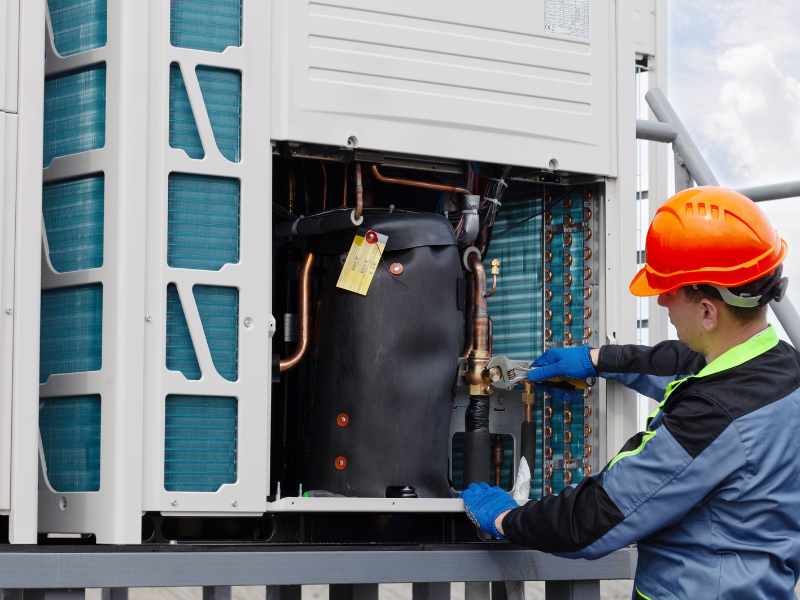
Regular HVAC maintenance is crucial for extending the lifespan and ensuring the efficiency of your heating and air conditioning system. Implementing these practices can significantly impact the system’s performance and durability:
- Regular Filter Changes: Changing the air filters regularly prevents dust and debris from clogging the system, maintaining its efficiency and indoor air quality.
- Annual Professional Inspections: Scheduling annual inspections with a certified technician helps identify and rectify minor issues before they escalate, ensuring optimal operation.
Adhering to these maintenance tips not only prolongs the life of your HVAC system but also enhances its performance and energy efficiency, leading to savings on energy bills and avoiding costly repairs.
Regular Air Filter Changes
Changing the air filters regularly is essential for keeping the air clean and maintaining the efficiency of the system. This straightforward maintenance task prevents dust and debris from obstructing the system’s operation.
Annual Professional Inspections
Annual inspections conducted by certified technicians are vital for early detection and resolution of potential issues, ensuring the system continues to operate at peak efficiency.
In Summary
Replacing your heating and air conditioning system is a significant investment that impacts your comfort and energy efficiency. Understanding the various factors that influence costs—such as the type of system, its size, efficiency ratings, and additional expenses like installation labor and ductwork modifications—can help you make an informed decision. By considering energy-efficient models, exploring rebates, and securing professional installation, you can maximize your savings and ensure long-term comfort and reliability.
Contact Callidus Air today for a comprehensive assessment and expert installation. Callidus Air is dedicated to helping you choose the perfect system that fits your budget and ensures year-round comfort. Call us now to schedule your consultation and start enjoying a more efficient and comfortable home!
